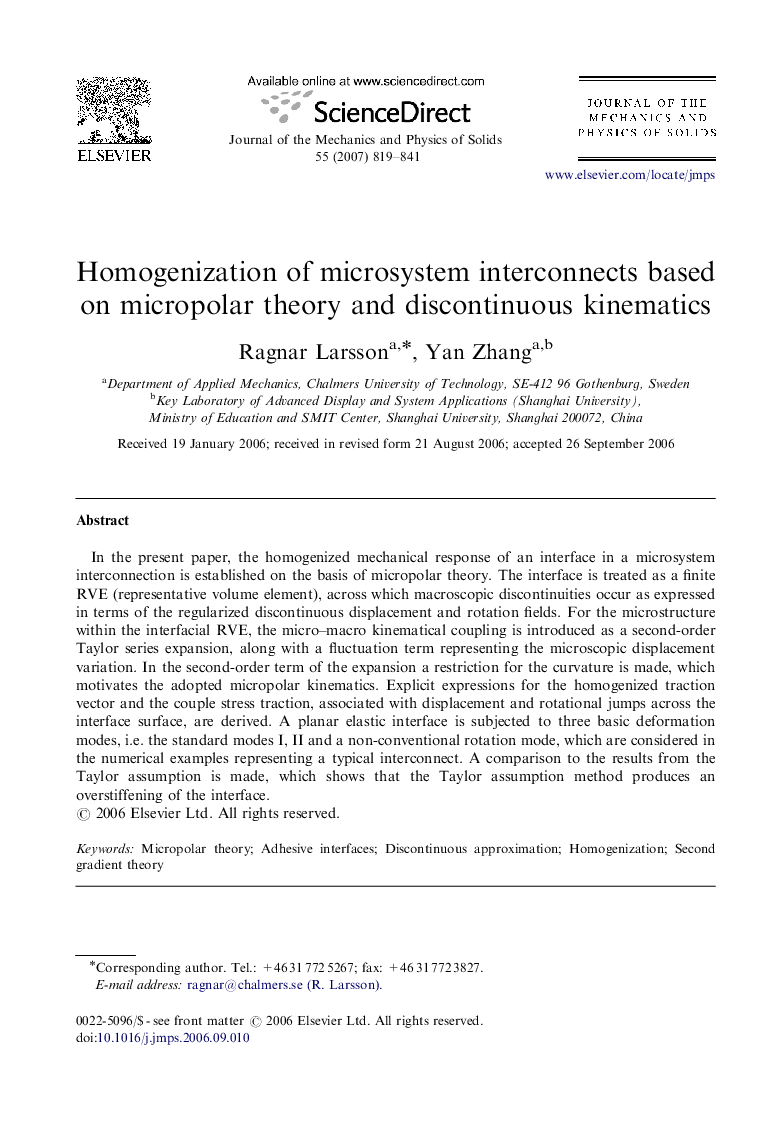| Article ID | Journal | Published Year | Pages | File Type |
|---|---|---|---|---|
| 798357 | Journal of the Mechanics and Physics of Solids | 2007 | 23 Pages |
In the present paper, the homogenized mechanical response of an interface in a microsystem interconnection is established on the basis of micropolar theory. The interface is treated as a finite RVE (representative volume element), across which macroscopic discontinuities occur as expressed in terms of the regularized discontinuous displacement and rotation fields. For the microstructure within the interfacial RVE, the micro–macro kinematical coupling is introduced as a second-order Taylor series expansion, along with a fluctuation term representing the microscopic displacement variation. In the second-order term of the expansion a restriction for the curvature is made, which motivates the adopted micropolar kinematics. Explicit expressions for the homogenized traction vector and the couple stress traction, associated with displacement and rotational jumps across the interface surface, are derived. A planar elastic interface is subjected to three basic deformation modes, i.e. the standard modes I, II and a non-conventional rotation mode, which are considered in the numerical examples representing a typical interconnect. A comparison to the results from the Taylor assumption is made, which shows that the Taylor assumption method produces an overstiffening of the interface.
